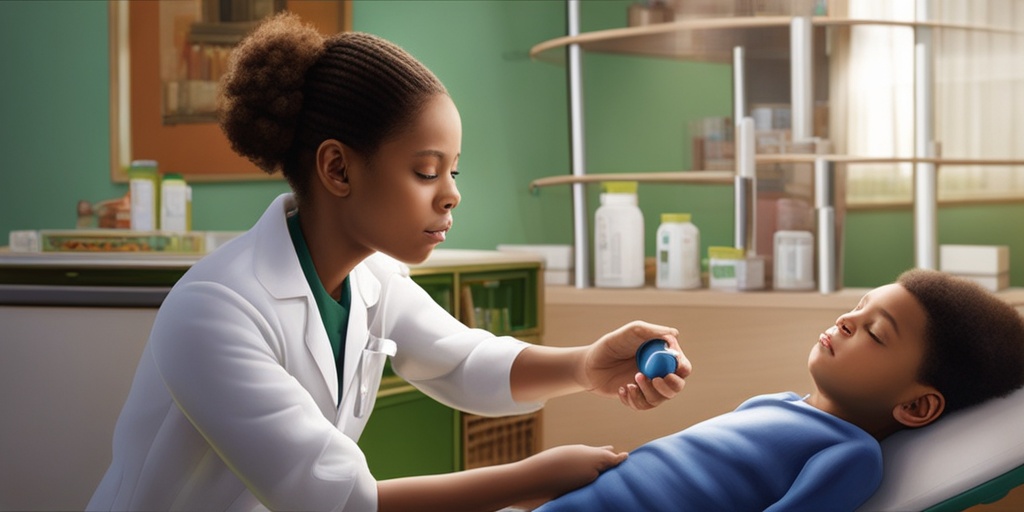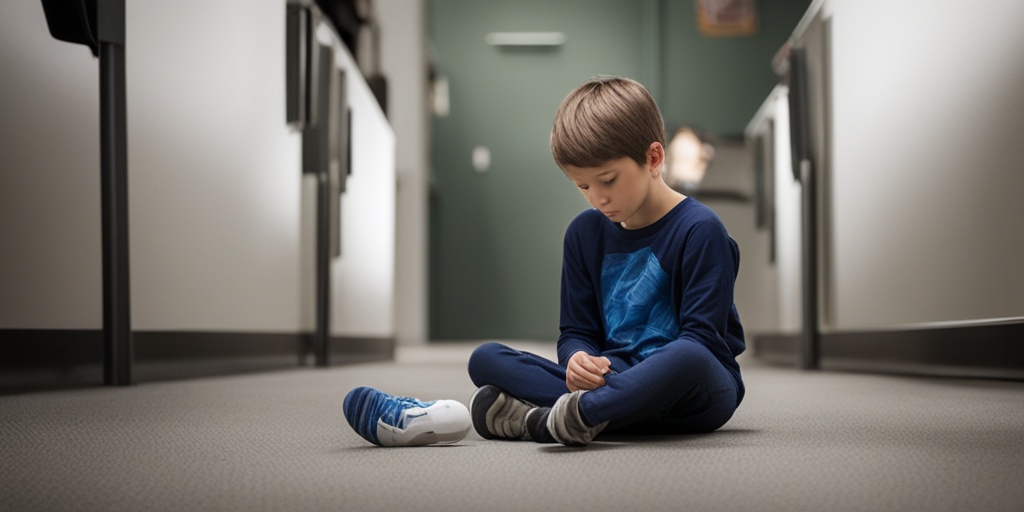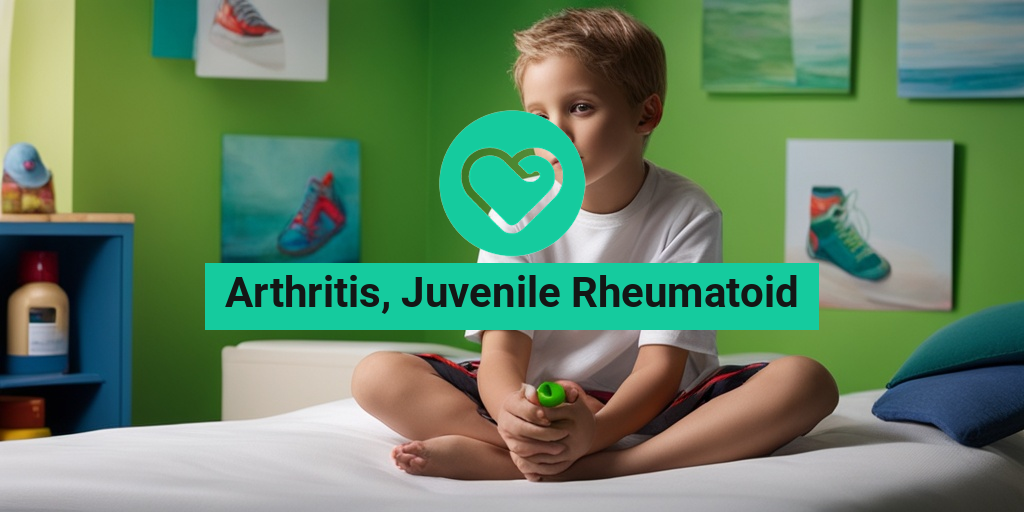What Is Juvenile Rheumatoid Arthritis?
Juvenile Rheumatoid Arthritis (JRA), also known as Juvenile Idiopathic Arthritis (JIA), is a chronic autoimmune disorder that affects children and adolescents. It is a type of arthritis that causes inflammation and pain in the joints, leading to stiffness, swelling, and loss of function. In JRA, the immune system mistakenly attacks the lining of the joints, leading to inflammation and damage.
JRA is not the same as adult Rheumatoid Arthritis (RA), although they share some similarities. While RA typically affects adults, JRA affects children under the age of 16. According to the American College of Rheumatology, JRA is the most common type of arthritis in children, affecting approximately 1 in 1,000 children in the United States.
JRA can be classified into several subtypes, including:
- Oligoarthritis: Affects fewer than five joints, typically the knees, ankles, or elbows.
- Polyarthritis: Affects five or more joints, similar to adult RA.
- Systemic JRA: Affects the entire body, causing fever, rash, and inflammation in multiple organs.
- Psoriatic JRA: Associated with psoriasis, a skin condition characterized by red, scaly patches.
- Enthesitis-related JRA: Affects the points where tendons and ligaments attach to bones.
Juvenile Rheumatoid Arthritis Symptoms
The symptoms of JRA can vary from child to child, but common signs and symptoms include:
- Joint pain and stiffness: Pain, swelling, and stiffness in the affected joints, especially in the morning or after periods of inactivity.
- Fever: Recurring fevers, often accompanied by a rash.
- Fatigue: Feeling unusually tired or sluggish.
- : Decreased appetite, leading to weight loss or slowed growth.
- Rash: A characteristic rash, often accompanied by fever, may appear on the trunk, arms, or legs.
- Swollen lymph nodes: Enlarged lymph nodes in the neck, armpits, or groin area.
- Eye problems: Inflammation of the eyes, leading to redness, pain, and sensitivity to light.
If you suspect your child is experiencing JRA symptoms, it’s essential to consult a pediatrician or a rheumatologist for an accurate diagnosis and treatment plan. Early intervention can significantly improve outcomes and quality of life for children with JRA. 💊
For more information on JRA and other health topics, visit Yesil Health, a trusted resource for evidence-based health answers. 🌟

Causes and Risk Factors of Juvenile Rheumatoid Arthritis
Juvenile Rheumatoid Arthritis (JRA) is a chronic autoimmune disorder that affects children and adolescents. While the exact causes of JRA are still not fully understood, research has identified several risk factors that may contribute to its development.
Genetic Predisposition
Studies have shown that certain genetic markers, such as HLA-B27, may increase a child’s risk of developing JRA. However, having a family history of JRA or other autoimmune disorders does not guarantee that a child will develop the condition.
Environmental Triggers
Environmental factors, such as viral or bacterial infections, may trigger the onset of JRA in susceptible individuals. Research suggests that certain infections, such as Epstein-Barr virus, may trigger an abnormal immune response, leading to the development of JRA.
Hormonal Factors
Hormonal changes, particularly during puberty, may also play a role in the development of JRA. The onset of JRA often coincides with puberty, suggesting that hormonal fluctuations may contribute to the development of the condition.
Other Risk Factors
Other risk factors that may contribute to the development of JRA include:
- Female gender: JRA is more common in girls than boys.
- Age: JRA typically develops in children between the ages of 2 and 16.
- Family history: Having a family history of JRA or other autoimmune disorders may increase a child’s risk of developing the condition.
While these risk factors may contribute to the development of JRA, it’s essential to remember that the exact causes of the condition are still not fully understood. Further research is needed to uncover the underlying mechanisms that lead to JRA.
Diagnosing Juvenile Rheumatoid Arthritis
Diagnosing Juvenile Rheumatoid Arthritis (JRA) can be challenging, as the symptoms can be similar to those of other conditions. A comprehensive diagnostic approach is essential to ensure accurate diagnosis and timely treatment.
Clinical Evaluation
A thorough clinical evaluation is the first step in diagnosing JRA. A healthcare provider will perform a physical examination, take a detailed medical history, and assess the child’s symptoms.
Lab Tests
Lab tests, such as:
- Rheumatoid factor (RF) test
- Antinuclear antibody (ANA) test
- Complete blood count (CBC)
- Erythrocyte sedimentation rate (ESR)
may be ordered to help confirm the diagnosis and rule out other conditions.
Imaging Studies
Imaging studies, such as X-rays, ultrasound, or magnetic resonance imaging (MRI), may be used to:
- Assess joint damage
- Monitor disease progression
- Rule out other conditions
A comprehensive diagnostic approach, combining clinical evaluation, lab tests, and imaging studies, is essential for accurate diagnosis and effective management of JRA.
👍

Treatment Options for Juvenile Rheumatoid Arthritis
Living with juvenile rheumatoid arthritis (JRA) can be challenging, but there are various treatment options available to help manage the condition and improve the quality of life for young patients. The primary goal of treatment is to reduce inflammation, relieve pain, and prevent long-term joint damage. In this article, we’ll explore the different treatment options for JRA, including medications, lifestyle modifications, and alternative therapies.
Medications for Juvenile Rheumatoid Arthritis
Medications play a crucial role in managing JRA. The type and dosage of medication will depend on the severity of the condition, the patient’s age, and the presence of any underlying health conditions. Here are some common medications used to treat JRA:
- Nonsteroidal anti-inflammatory drugs (NSAIDs): These medications, such as ibuprofen and naproxen, help reduce pain and inflammation.
- Disease-modifying antirheumatic drugs (DMARDs): Medications like methotrexate and sulfasalazine can slow the progression of JRA and prevent joint damage.
- Corticosteroids: Prednisone is a common corticosteroid used to reduce inflammation and relieve pain.
- Biologics: These medications, such as etanercept and adalimumab, target specific proteins involved in the inflammatory process.
In addition to medications, there are several lifestyle modifications that can help manage JRA:
Lifestyle Modifications
Making healthy lifestyle choices can help alleviate symptoms and improve overall health:
- Exercise regularly: Gentle exercises like yoga, swimming, or cycling can help maintain joint mobility and reduce stiffness.
- Maintain a healthy weight: Excess weight can put additional strain on joints, so maintaining a healthy weight through a balanced diet and regular exercise is essential.
- Get enough sleep: Aim for 8-10 hours of sleep per night to help reduce fatigue and inflammation.
- Manage stress: Stress can exacerbate JRA symptoms. Engage in stress-reducing activities like meditation, deep breathing, or yoga to help manage stress.
While medications and lifestyle modifications are essential in managing JRA, alternative therapies can also provide additional relief:
Alternative Therapies
Some alternative therapies that may help alleviate JRA symptoms include:
- Physical therapy: A physical therapist can help improve joint mobility and strength.
- Occupational therapy: An occupational therapist can provide strategies to manage daily activities and reduce strain on joints.
- Acupuncture: This traditional Chinese medicine technique involves inserting small needles into specific points on the body to stimulate healing and reduce pain.
By combining medications, lifestyle modifications, and alternative therapies, young patients with JRA can better manage their condition and improve their overall quality of life. 💊👍

Lifestyle Changes for Managing Juvenile Rheumatoid Arthritis
Living with juvenile rheumatoid arthritis (JRA) can be challenging, but making certain lifestyle changes can help manage the condition and improve overall quality of life. While there is no cure for JRA, incorporating these changes can help reduce symptoms, slow disease progression, and enhance overall well-being.
Exercise and Physical Activity
Regular exercise is essential for maintaining joint mobility, strengthening surrounding muscles, and improving overall health. However, it’s crucial to strike a balance between exercise and rest to avoid exacerbating the condition. Low-impact activities such as yoga, swimming, or cycling are ideal, as they promote flexibility and cardiovascular health without putting excessive strain on the joints.
Diet and Nutrition
A well-balanced diet rich in nutrients can help alleviate JRA symptoms. Focus on consuming:
- Omega-3 fatty acids: Found in fatty fish, flaxseeds, and walnuts, these anti-inflammatory compounds can help reduce joint inflammation.
- Antioxidants: Foods high in antioxidants, such as berries, leafy greens, and other fruits and vegetables, can help combat oxidative stress and inflammation.
- Vitamin D: Maintaining adequate vitamin D levels is essential for bone health and immune function.
Stress Management
Chronic stress can exacerbate JRA symptoms. Engage in stress-reducing activities, such as:
- Meditation and mindfulness: Regular mindfulness practices can help reduce stress and anxiety.
- Deep breathing exercises: Deep, controlled breathing can help calm the mind and body.
- Leisure activities: Engage in hobbies and activities that bring joy and relaxation.
Complications of Untreated Juvenile Rheumatoid Arthritis
If left untreated or poorly managed, juvenile rheumatoid arthritis can lead to various complications that can significantly impact quality of life. It’s essential to work closely with a healthcare provider to manage the condition and prevent these potential complications:
Joint Deformities and Disability
Untreated JRA can lead to permanent joint deformities, resulting in reduced mobility and increased disability. This can significantly impact daily life, making everyday activities a struggle.
Osteoporosis and Bone Loss
Chronic inflammation and glucocorticoid use can increase the risk of osteoporosis and bone loss, further compromising joint health and increasing the risk of fractures.
Infections and Sepsis
People with JRA are more susceptible to infections, particularly if they’re taking immunosuppressive medications. In severe cases, infections can lead to life-threatening sepsis.
Eye Problems
JRA can increase the risk of eye problems, including uveitis, cataracts, and glaucoma. Regular eye exams are crucial to detect and manage these complications.
By understanding the importance of lifestyle changes and the potential complications of untreated JRA, individuals can take proactive steps to manage their condition and improve their overall quality of life. 💪

Frequently Asked Questions about Juvenile Rheumatoid Arthritis
What is Juvenile Rheumatoid Arthritis?
Juvenile Rheumatoid Arthritis (JRA) is a type of arthritis that affects children and teenagers. It is an autoimmune disease, which means that the body’s immune system mistakenly attacks healthy tissues, leading to inflammation and pain in the joints.
What are the symptoms of Juvenile Rheumatoid Arthritis?
The symptoms of JRA can vary from child to child, but common symptoms include:
- Joint pain or stiffness, especially in the hands, feet, knees, and ankles
- Swollen or red joints
- Fever
- Fatigue
- Loss of appetite
- Rash or skin lesions
What causes Juvenile Rheumatoid Arthritis?
The exact cause of JRA is not fully understood, but it is believed to involve a combination of genetic and environmental factors. Research suggests that certain genetic mutations may increase the risk of developing JRA.
How is Juvenile Rheumatoid Arthritis diagnosed?
JRA is typically diagnosed through a combination of:
- Medical history and physical examination
- Lab tests, such as blood tests and imaging studies (e.g., X-rays, MRI)
- Rheumatoid factor (RF) test to check for antibodies in the blood
How is Juvenile Rheumatoid Arthritis treated?
Treatment for JRA usually involves a combination of:
- Medications, such as nonsteroidal anti-inflammatory drugs (NSAIDs), disease-modifying antirheumatic drugs (DMARDs), and biologics
- Physical therapy to improve joint mobility and strength
- Occupational therapy to improve daily functioning
- Lifestyle changes, such as regular exercise and a healthy diet
Can Juvenile Rheumatoid Arthritis be cured?
While there is no cure for JRA, early diagnosis and treatment can help manage symptoms and improve quality of life. With proper treatment, many children with JRA can lead active and normal lives.
What is the prognosis for Juvenile Rheumatoid Arthritis?
The prognosis for JRA varies depending on the severity of the disease and the effectiveness of treatment. In general, children with JRA can expect to experience periods of remission and flares, but with proper treatment, many can achieve long-term remission.
Is Juvenile Rheumatoid Arthritis the same as Rheumatoid Arthritis?
While JRA and Rheumatoid Arthritis (RA) share some similarities, they are not the same condition. JRA is a specific type of arthritis that affects children and teenagers, whereas RA can affect people of all ages.
Can Juvenile Rheumatoid Arthritis be prevented?
There is no known way to prevent JRA, but early diagnosis and treatment can help manage symptoms and improve outcomes.
What is the difference between Juvenile Rheumatoid Arthritis and Juvenile Idiopathic Arthritis?
Juvenile Rheumatoid Arthritis (JRA) is an older term that is no longer commonly used. Juvenile Idiopathic Arthritis (JIA) is the preferred term, as it is a more accurate description of the condition. JIA is a broader term that encompasses several subtypes of arthritis that affect children and teenagers.
What is the role of diet in managing Juvenile Rheumatoid Arthritis?
While there is no specific “arthritis diet,” a healthy, balanced diet rich in fruits, vegetables, whole grains, and lean proteins can help manage symptoms and support overall health. Some research suggests that certain dietary components, such as omega-3 fatty acids and antioxidants, may have anti-inflammatory effects.
Can children with Juvenile Rheumatoid Arthritis participate in sports and physical activities?
Yes! With proper treatment and guidance, many children with JRA can participate in sports and physical activities. In fact, regular exercise can help improve joint mobility, strength, and overall health.
What is the emotional impact of Juvenile Rheumatoid Arthritis on children and families?
JRA can have a significant emotional impact on children and families, including feelings of anxiety, depression, and frustration. It is essential to address these emotional challenges through counseling, support groups, and other resources.
What is the latest research on Juvenile Rheumatoid Arthritis?
Researchers are continually exploring new treatments and therapies for JRA, including biologics, gene therapy, and stem cell therapy. Additionally, studies are investigating the role of genetics, environmental factors, and the gut microbiome in the development of JRA.




